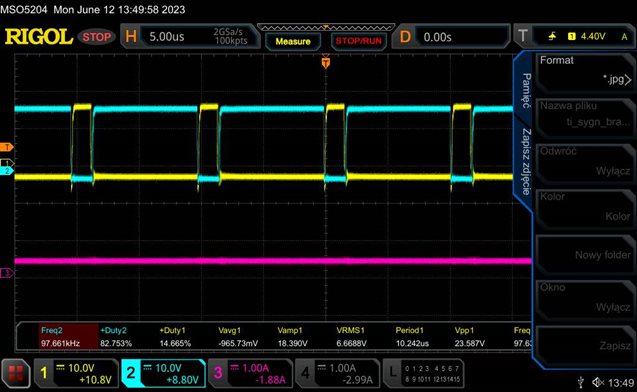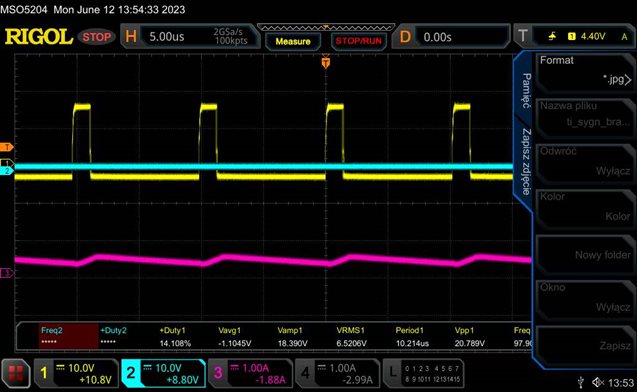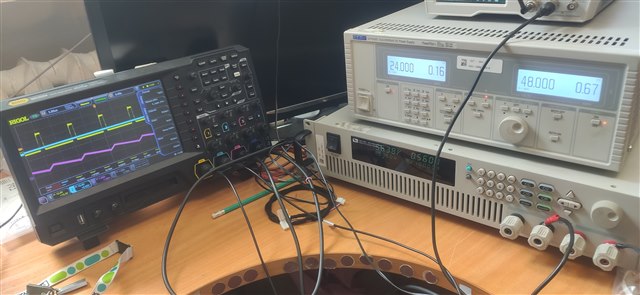Other Parts Discussed in Thread: LM5170
Tool/software:
I am writing regarding a problem with the LM5170-Q1 current controller. LM5170-Q1 operates in boost mode and one channel is enabled in the configuration mentioned below:
- DIR: 0 (0V)
- EN1: 1 (5V)
- EN2: 0 (0V)
- UVLO: 1 (5V)
- OPT: 1 (5V)
- DT_ADJ: PWM signal 0-5V, 10kHz, 11% duty
- ISETD: PWM signal 0-5V, 10kHz, 32% duty
In this case, the output PWMs are about 14% and 83% duty on the first channel. The problem is that I can't change the duty cycle even under load (50 Ohms, 20V in LV). I also noticed that on the COMP1 pin there is ~0.44V at 28% duty and it rapidly increases to ~6.4V at 29% duty. I have attached a schematic with the LM5170-Q1 connections. The current measurement is realized using an HMSR-30SMS LEM sensor.
Kind regards





